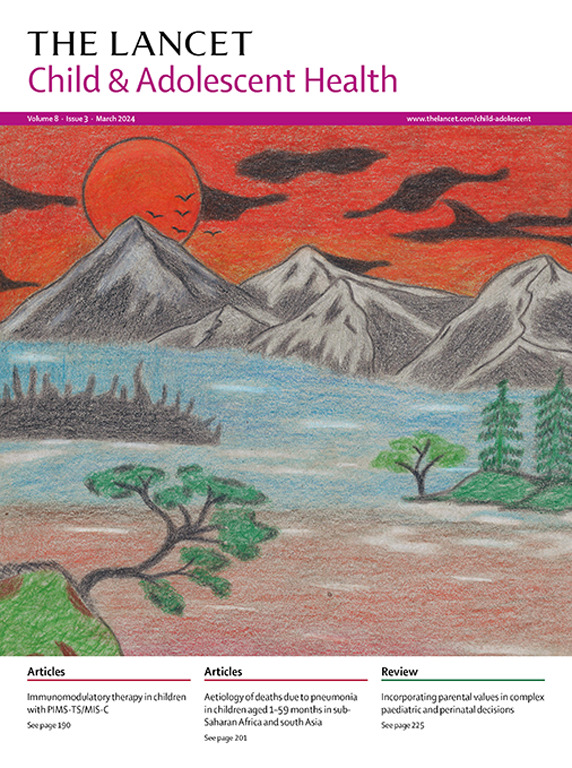Co-design methodologies to develop mental health interventions with young people: a systematic review
IF 15.5
1区 医学
Q1 PEDIATRICS
引用次数: 0
Abstract
Co-design methodologies are increasingly being used to develop mental health interventions with young people (aged 10–24 years), but the adoption of this participatory approach has been accompanied by concerns around quality, reporting, and participation. We aimed to identify and critically assess the characteristics, quality, outcomes, barriers, and facilitators of co-design methodologies used to develop mental health interventions with young people. We searched MEDLINE, PubMed, PsycINFO, SCOPUS, and Web of Science for articles published from database inception to Feb 6, 2024. We included articles describing empirical studies that used co-design in the development of a mental health intervention with young people, and identified 41 unique co-design studies. Our systematic review revealed that the use of co-design methodologies to develop mental health interventions has expanded substantially over the past 5 years. We also found that the application of co-design terms, frameworks, and methods varied across the studies, and most co-designed interventions had not been evaluated. A third of the studies evaluating the co-design process were assessed as being low quality, and two-thirds had a low degree of participation of young people in the co-design process. In the future, this area should be guided by clearer terms and frameworks, higher quality and degree of participation, and greater evaluation of co-designed programmes.
针对年轻人制定精神卫生干预措施的共同设计方法:系统回顾。
共同设计方法越来越多地被用于制定针对年轻人(10-24岁)的心理健康干预措施,但采用这种参与性方法的同时,也伴随着对质量、报告和参与的担忧。我们的目的是确定并批判性地评估用于开发年轻人心理健康干预措施的共同设计方法的特征、质量、结果、障碍和促进因素。我们检索了MEDLINE, PubMed, PsycINFO, SCOPUS和Web of Science从数据库建立到2024年2月6日发表的文章。我们纳入了描述在开发针对年轻人的心理健康干预中使用共同设计的实证研究的文章,并确定了41个独特的共同设计研究。我们的系统回顾显示,在过去5年中,共同设计方法在制定精神卫生干预措施方面的应用已经大大扩大。我们还发现,在不同的研究中,共同设计的术语、框架和方法的应用各不相同,而且大多数共同设计的干预措施尚未得到评估。评估共同设计过程的研究中有三分之一被评估为低质量,三分之二的研究在共同设计过程中年轻人的参与程度较低。今后,这一领域应以更明确的条款和框架、更高的参与质量和程度以及对共同设计的方案进行更好的评价为指导。
本文章由计算机程序翻译,如有差异,请以英文原文为准。
求助全文
约1分钟内获得全文
求助全文
来源期刊

Lancet Child & Adolescent Health
Psychology-Developmental and Educational Psychology
CiteScore
40.90
自引率
0.80%
发文量
381
期刊介绍:
The Lancet Child & Adolescent Health, an independent journal with a global perspective and strong clinical focus, presents influential original research, authoritative reviews, and insightful opinion pieces to promote the health of children from fetal development through young adulthood.
This journal invite submissions that will directly impact clinical practice or child health across the disciplines of general paediatrics, adolescent medicine, or child development, and across all paediatric subspecialties including (but not limited to) allergy and immunology, cardiology, critical care, endocrinology, fetal and neonatal medicine, gastroenterology, haematology, hepatology and nutrition, infectious diseases, neurology, oncology, psychiatry, respiratory medicine, and surgery.
Content includes articles, reviews, viewpoints, clinical pictures, comments, and correspondence, along with series and commissions aimed at driving positive change in clinical practice and health policy in child and adolescent health.
 求助内容:
求助内容: 应助结果提醒方式:
应助结果提醒方式:


